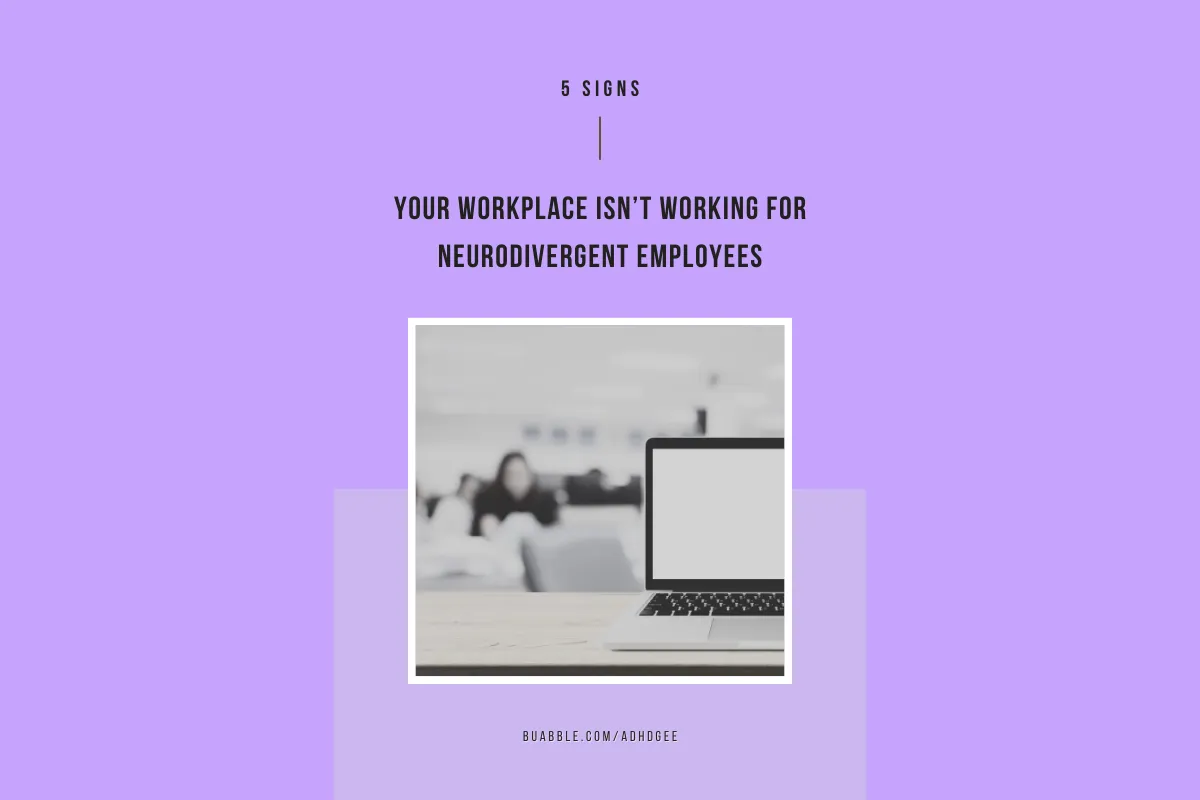
5 Signs Your Workplace Isn’t Working for Neurodivergent Employees
5 Signs Your Workplace Isn’t Working for Neurodivergent Employees
Many companies say they value diversity, but when it comes to neurodiversity, the gap between intention and impact can be wide.
Neurodivergent employees (those with ADHD, autism, dyslexia, Tourette's, and more) are often hired into environments that were never built with their needs in mind. Even well-meaning organisations can unintentionally create conditions that exclude, overwhelm, or burn out people with different cognitive styles.
So how can you tell if your workplace is actually inclusive for neurodivergent team members?

Here are 5 signs that it might not be, and what you can do about it.
1. Employees Are Masking - and You Don’t Know It
If you’ve never had an employee disclose a neurodivergent condition, don’t assume that means no one on your team is neurodivergent. It might mean they don’t feel safe enough to share it.
Masking, the act of hiding traits, suppressing needs, or “performing” to seem neurotypical, is mentally exhausting. And it’s common among neurodivergent professionals, especially those with ADHD or autism.
📉 Over time, chronic masking leads to burnout, disengagement, and high turnover.
✅ What to do: Create psychological safety. Normalise conversations about different needs. Make disclosure low-pressure and confidential.
2. There’s One “Right” Way to Work
If your workplace rewards people who are always fast, always available, and always verbal, you may be excluding those who process or communicate differently.
Neurodivergent professionals may:
Need more processing time
Prefer written communication
Thrive in deep-focus environments
Work best with clarity and structure
📉 Uniform expectations around communication and performance penalise cognitive difference.
✅ What to do: Offer flexibility. Focus on outcomes, not “style.” Encourage team-wide conversations about preferred ways of working.
3. Feedback Is Vague or Infrequent
Neurodivergent employees often rely on clear, consistent feedback to succeed. If your feedback systems are based on intuition, “vibes,” or annual reviews only, you’re likely missing opportunities to support people early.
📉 Vague feedback can feel like criticism without a solution.
✅ What to do: Train managers to give structured, actionable feedback. Check in more regularly and give time for questions.
4. Sensory and Environmental Needs Are Overlooked
Open-plan offices, nonstop notifications, constant Zoom calls,... These aren’t ideal for anyone, but can be especially hard on those with sensory sensitivity or executive function challenges.
📉 Environments that overwhelm the senses lead to fatigue and underperformance.
✅ What to do: Offer quiet workspaces, flexible schedules, and control over when and how people engage.
5. You’re Doing Awareness, But Not Action
Posting about Neurodiversity Celebration Week is great. But if your hiring process still penalises candidates for being “awkward” or “different,” you’re still stuck at awareness.
Inclusion without structural change isn’t inclusion. It’s decoration.
📉 Tokenism erodes trust.
✅ What to do: Go deeper. Review your systems, train your leaders, and make changes that stick.
In Summary
If you’re seeing high turnover, quiet disengagement, or mental health strain on your teams, especially among your most creative or “outside-the-box” thinkers, neuroinclusion may be the missing piece.
These 5 signs are a starting point, not a diagnosis. The good news? Inclusion isn’t about being perfect. It’s about being willing to change.
👉 I help organisations audit their workplace practices, train their teams, and coach managers to better support neurodivergent employees.
📩 Book a free Introductory Conversation on [email protected]
📖 Download my free starting list - 5 Ways to Make Your Workplace More Inclusive for Neurodivergent Employees - here
